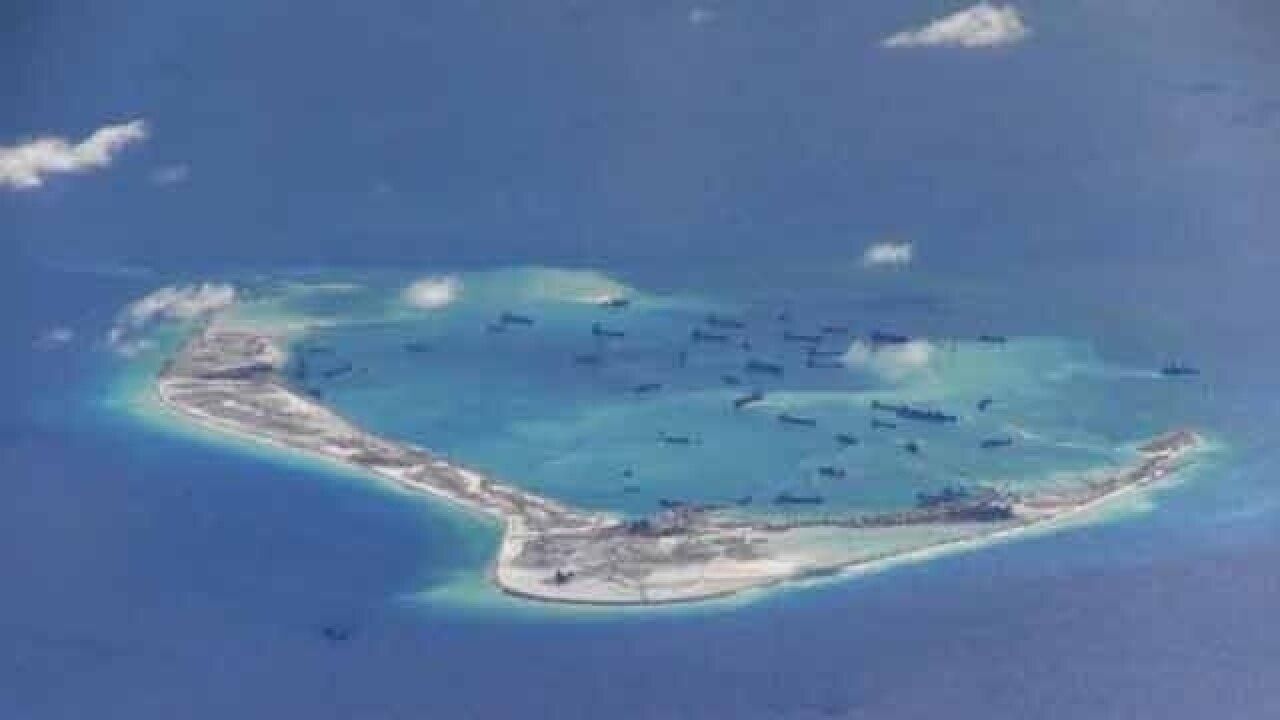
The Permanent Court of Arbitration (PCA) at The Hague ruled on 12 July, refuting China’s claims to islands in the South China Sea (SCS) and that the Spratly Islands within 200 miles of the coast of the Philippines are, in fact, Philippine territory. However, a belligerent China refused to accept the ruling, turning the entire international justice system upside down.
Nearly 3.5 million square km of the SCS is in dispute as China, Vietnam, Philippines, Taiwan, Malaysia and Brunei claim sovereignty. Quoting the historic nine-dash line, the Chinese claim most of the SCS including the Paracel and Spratly island chains. The South China Sea is the second-most used sea-lane in the world with over 30% of world merchant tonnage passing through the Strait of Malacca. SCS reportedly has huge oil reserves and is dubbed as the ‘Second Persian Gulf’ and it accounts for nearly 12% of world fishing catch. China has been rapidly piling sand onto reefs in the South China Sea, creating 7 new islets and in turn extending its Economic Exploitation Zone (EEZ) rights over 90% of SCS and enhanced Air Defence Identification Zone (ADIZ), both of which have serious security and economic implications. It has already constructed ports, military installations and airstrips. The installations bolster China’s foothold in the region. China currently controls 8 Spratly Islands, Vietnam 29, the Philippines 8, Malaysia 5, Brunei 2 and Taiwan one. Both USA and China have been conducting a show of force of naval and air exercises in the region. In 2011, India's Oil and Natural Gas Corporation signed a three-year deal with Petro-Vietnam for developing oil blocks in SCS, which China protested.
For over a decade, China has been investing in the Indian Ocean region and using geopolitical influence through military supplies, airfield & port construction and economic aid. Popularly known as the ‘String of Pearls’, India sees it as encirclement of India. Investments in Gwadar port on the mouth of Persian Gulf in Pakistan and funding of the investment corridor to connect Western China to the sea passing through disputed Pakistan-occupied-Kashmir. Hambantota port in Sri Lanka, Chittagong and Sonadia in Bangladesh, a port in Sudan on Red Sea, and a port in Somalia are part of their plan. China also offered to fund a canal at Kra Isthmus in Thailand connecting Gulf of Thailand to Andaman Sea to bypass Malacca Strait. China has for long been building roads and airfields in Myanmar and developed a deep-water port and an electronic intelligence base at Coco Islands, just 18 km from India’s Andaman Islands. China supports Pakistan’s military-industrial-complex in a big way.
In 2012, US President Barack Obama initiated a foreign policy shift to look east. To neutralise a rising China, USA began establishing military, economic, and diplomatic ties with adjacent countries. USA already has significant naval and air presence in Guam and Japan. Singapore has a US supported aircraft carrier construction facility. USA has strengthened defence cooperation with Philippines. The Chinese see this as a ‘China containment policy’. The presence of American military in Afghanistan, Uzbekistan, and Tajikistan; strengthened ties with South Korea and Japan; efforts to woo India and Vietnam are critical to the US ‘Pivot to Asia Strategy’. US, Japan and Australia are often labelled as ‘little NATO against China’. USA is prioritising the Pacific theatre with increased military presence and ultimately 60% of the US Navy will be based in the Pacific.
Meanwhile, China is aggressively developing and deploying newer ships, AWACS and fifth generation fighters to protect islands in the SCS.
USA needs India to contain China. India also wants to manage an increasingly assertive China. USA cleared the sale of C-130J-30s special operations aircraft, C-17 large military transport aircraft, P-8I maritime surveillance and attack aircraft, Apache attack helicopters and heavy-lift Chinook helicopters. Large number of GE F404 and F414 engines are being acquired for LCA program, thus making USA among the top three arms suppliers. Recently US offered to set up F-18 or F-16 aircraft production facilities in India for worldwide supplies. US is further offering India nuclear technology, and support for high seats in MTCR, NSG and UNSC. India and United States have conducted dozens of joint military exercises. Delhi is supporting Vietnam on training on Kilo Class submarines and Su-30, and has offered anti-submarine torpedoes and BrahMos cruise missiles. Yet, there are complexities. China remains the largest foreign creditor of the United States, holding about 10% (US$1.8 trillion) of the US national debt. Australia has a growing dependency on China’s market. Its mining industry is booming owing to Chinese demand. China is India's largest trading partner. China has already overtaken the US as Japan’s largest trading partner.
Notwithstanding the tough Philippines stand, they have few options. The US Navy has conducted ‘Freedom of Seas’ sail-bys within 12 miles of China’s artificial islands, to drive home the contention that these are international waters. India too sent two naval ships in the region. Meanwhile, India has strengthened strategic partnerships with Russia, Vietnam, Japan, Singapore & Iran. To neutralise Chinese influence, India has been offering funding for monitoring facilities in Madagascar, construction of an airstrip in Mauritania, a radar station in Maldives, Sittwe port in Myanmar and Chabahar port in Iran. Japanese Maritime Self-defence Forces and Indian Navy regularly take part in Malabar series of exercises.
A rising China and common security concerns have brought USA, Japan, Australia, ASEAN and India closer on strategic approach in the region. China can’t be allowed to get away by flouting the international court ruling. The world is by-and-large united on the issue. Show of force is a must. A large flotilla of 100 odd naval ships composed of many countries may sail into South China Sea to show serious displeasure. If the world economies need cheap Chinese goods, so does China need their markets. The bluff has to be called.